I found myself at Grand Canyon once again with hopes of interesting storms and lightning as well as sunset and astrophotography.

Late in the afternoon, these two cumulus towers south of Grand Canyon suggested that the next few hours could be interesting. Less than one-half hour later, the convection had become a Cumulonimbus with lightning. The storm was a fair distance away so that the lightning bolts were small—and in the wrong location. I had hoped to photograph a storm with lightning over the canyon but it was not to be.
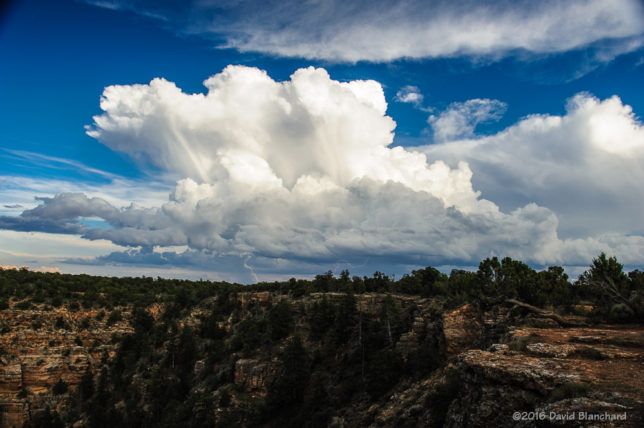
That storm weakened and my attention turned to the fading colors of sunset within the canyon.
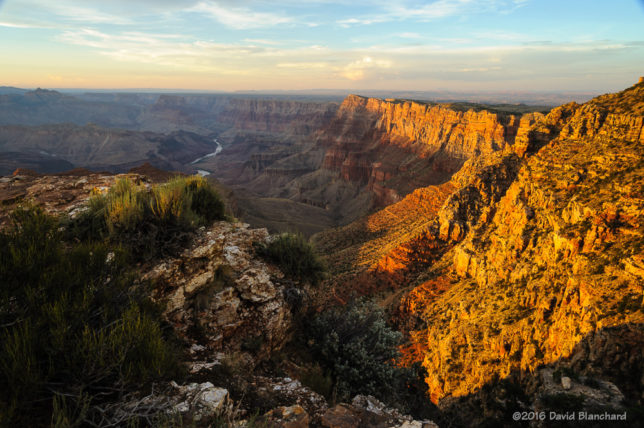
New thunderstorms developed south of the original storms and the large spreading anvil was awash with sunset colors. To the north high clouds were also taking part in the sunset show.
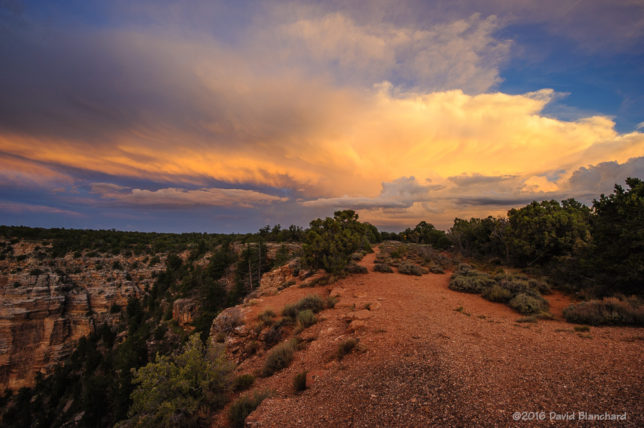
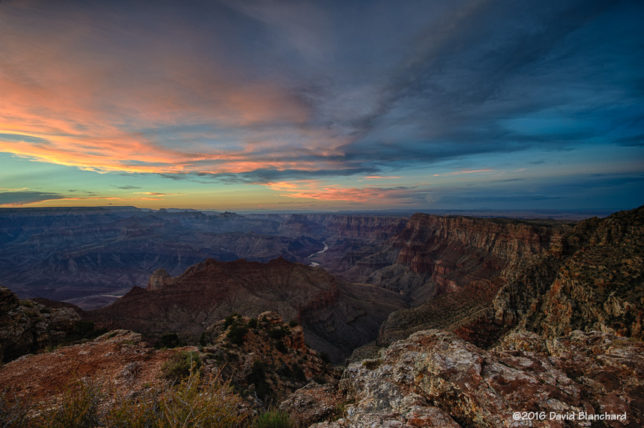
To the west, skies were clear allowing the Moon, Jupiter, Mercury, and Venus to shine in the fading light. Yes, that’s how they were lined up that evening—and this lineup was one of the reasons I was at the Grand Canyon that evening. Layers of haze—likely to be smoke—linger just above the horizon adding another touch of color to the sky.
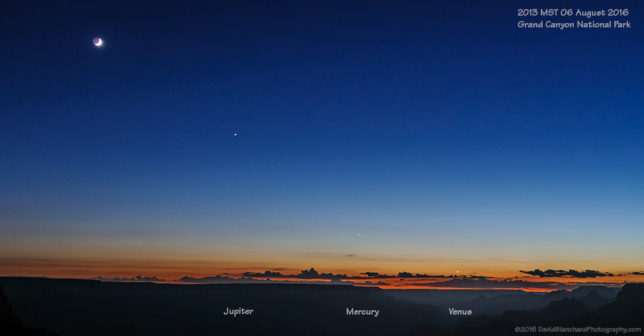
Darkness fell upon the land and the thunderstorms were occasionally illuminated by lightning flashes while the stars became brighter with the deepening twilight.
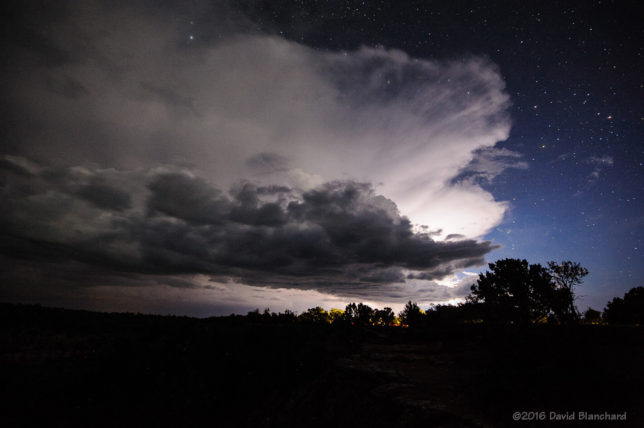
As twilight ended and the moon sank lower in the western sky the Milky Way began to dominate the night sky. Lightning from storms to the east provide faint illumination of the Watchtower at Desert View.
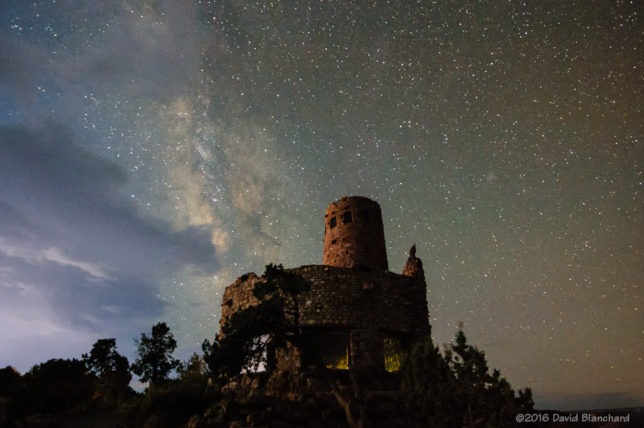
Just another day at the Grand Canyon.